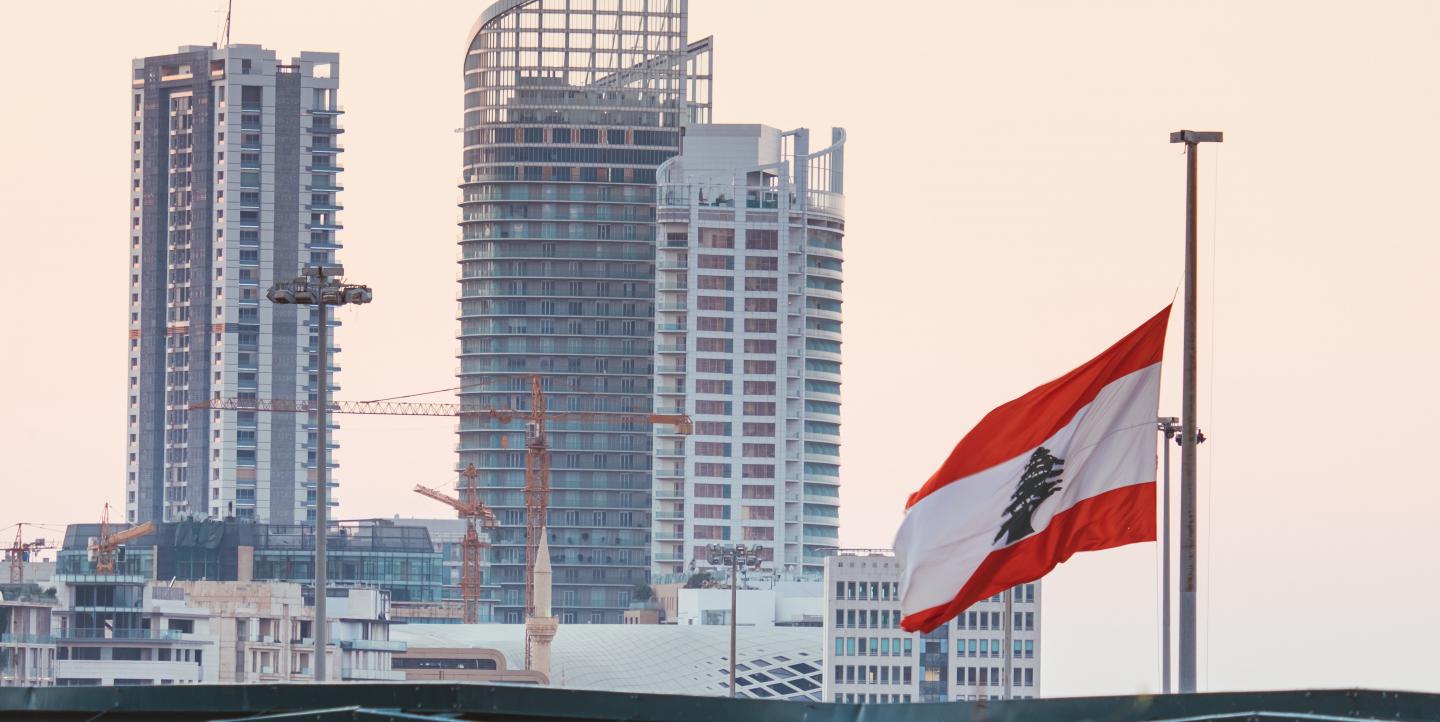Unrest had been boiling in Lebanon for many months. The economic crisis was worsening, and the government was accused of a lack of ability or will to stop it. At the same time, wildfires swept through western mountains and areas south of Beirut, but the state was unable to intervene because its firefighting helicopters were grounded due to lack of maintenance. In October 2019, when the government proposed new austerity measures, including a WhatsApp tax, it was the final straw.
On October 17, 2019, protests erupted throughout the country. Megaphone News, a social media-based outlet, was working on a documentary and fine-tuning their website, but after witnessing the situation, they pivoted to breaking news. The team used Instagram Live videos to capture the wildfires and protests. “We didn’t know what was happening; we went live on Instagram [to cover it],” said Jonathan Dag, a journalist, producer and voice-over artist at Megaphone News.
When protests began, journalistic instinct also kicked in for Laudy Issa, editor-in-chief of digital outlet Beirut Today (BT). Activists created BT three years ago to share news and opinions in English and Arabic that aren’t covered by traditional media. The publication relies on community contributors and professional journalists.
On the first night of the protests, mostly using material published on social media by anonymous people and journalists, Issa produced a video showing the nationwide protests. The video unmuted the protestors, while using subtitles to deliver the basic facts to viewers. “People were absolutely done [with the situation],” says Issa. “There was a lot of hope and momentum.” With 150,000 views across social media platforms, the video hit a record for the team.
Independent media played a critical role by channeling the demands, acting as a watchdog and sustaining the momentum calling for change.
A different relationship with objectivity
Traditional media in Lebanon is concentrated in the hands of a small, powerful group, regulatory safeguards for further concentration, according to the Media Ownership Monitor. There is a lack of transparency that makes it difficult to measure the extent of the problem in exact numbers, but at least 43% of Lebanese media companies are partially owned by one of twelve powerful families.
In this environment, media narratives are influenced by political parties, establishment figures, or wealthy businessmen to further political agendas. Investigations of deep-rooted problems such as dysfunctional infrastructure, LGBTQ+ rights or refugees are sidelined or politicized for personal gain.
[Read more: This young newspaper covers the latest protests in Lebanon]
Into this environment, new, independent media outlets were born. At many of these outlets, contributors have strong ties to activism or academia, and their founders don’t consider neutrality part of the solution.
For example, Megaphone News was born out of failed protests in Lebanon in 2015. After a trash crisis, a newly-formed secular party, Beirut Madinati (Beirut, My City), presented independent candidates to the 2016 Beirut municipal elections advocating for transparency, accountability and improving infrastructure. When they lost the overall elections, the founders of Megaphone News concluded that Lebanon lacked a medium to reflect alternative narratives outside of party circles. Eight activists, designers, journalists and students came together to create Megaphone News in 2017, with a pro-change agenda.
“We think a lot about the distinction between journalism and activism. Personally I don’t see too much of a distinction except on the approach,” says Dag. “I think the goal is the same, to push society forward and achieve equality between people. Megaphone has an active stance, which is why people think we are the voice of the revolution. But we also are very critical of the revolution.”
In January 2020, editor-in-chief Lara Bitar decided to rush the launch of The Public Source, a new publication that produces long-form and in-depth journalism. The outlet is structured as a non-hierarchical collective.
Like Megaphone, The Public Source editorial line follows the direction that neutrality favors the strongest party. She explains that The Public Source’s approach is “to be in solidarity with the people struggling, with the aim of working in the public interest”.
To get the most representative story, The Public Source often turns to subjects to tell their own story. In one example, the outlet published an article about the impossibility for 250,000 domestic workers — one of the country’s most vulnerable groups — to take part in the protests. The author, Banchi Yimer, wasn’t a journalist, but a former domestic worker and founder of Engna Legna (Us for Ourselves), a community-based organization working on domestic worker rights.
[Read more: Challenging journalistic objectivity: Q&A with Lewis Raven Wallace]
Reporting on the October uprisings
During the "October Revolution," as some have called it, many of these publications were on the frontlines covering the events, which helped them grow their audience. Megaphone News, for example, grew from 8,000 to 60,000 followers on Instagram.
Beirut Today had similar growth, doubling their following on Instagram and Twitter since the uprisings began. They also increased their content production, jumping from one or two submissions per week to daily pitches.
Coverage from these independent media outlets mirrored the dynamism of civil society’s concerns. When the Lebanese state became more violent, interest shifted to tear gas and police brutality. To make sure their coverage stayed focused, the Beirut Today team centered their work on three critical tasks: inform, criticize and explore alternatives.
An important goal for BT was to cover stories outside the capital, Beirut. They published photo essays from Tripoli and Jounieh, cities which are underrepresented in the media, despite being politically and economically important.
Looking back, Issa wishes they had more news from protests in the south of the country. “There was so much going on, it would have been impossible to cover everything that was happening,” she said. “But I wish we had more news from specifically the south, since it was the first time that there was opposition to the leaders of the south.”
The Public Source started a section of it’s website called “dispatches from the October Revolution,” which covered the events and contextualized daily struggles through in-depth reporting. In their first article on the burden of public debt on the Lebanese economy, they trace the debt crisis to its roots.
The work of these news outlets was critical during the early days of the protests, and continues to stay relevant with projects and stories like those outlined above. More than a year after the October uprisings began, the situation in Lebanon continues to change, and as they do, independent media is there, covering it all.
Aina de Lapparent is a French-Catalan freelance journalist based in Paris currently studying a Masters in Journalism at Sciences Po. She's a contributor to Inside the Newsroom, a newsletter and podcast on international news, writing weekly round-ups of the news in the Middle East. She's interested in media innovation, Solutions journalism, social issues, and the Middle East.


